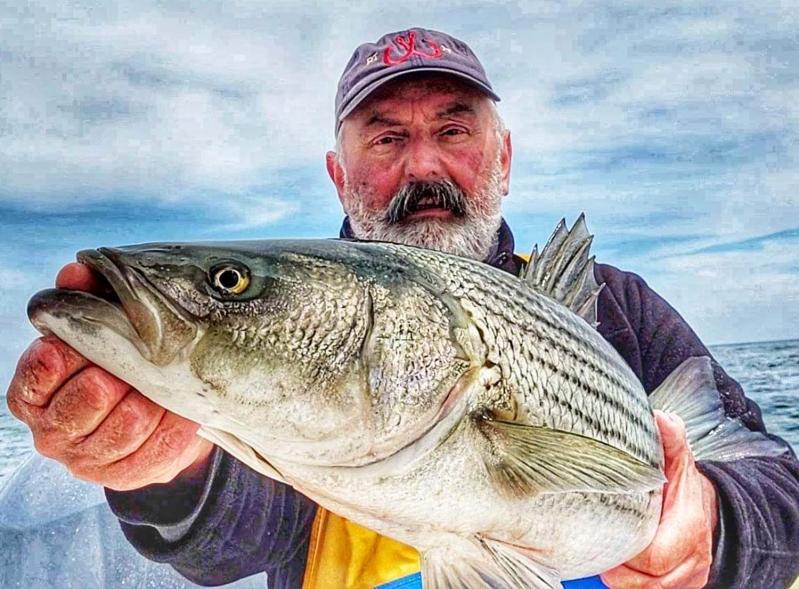It’s a bit of déjà vu all over again.
As has become the norm at the beginning of every year, regulations surrounding various saltwater fish caught by both recreational and commercial fishermen are being addressed by fishery regulators. It’s an annual ritual that has now been in place for around 50 years.
At the top of the list is the ever-popular striped bass. A favorite among anglers of all kinds.
Low levels of spawning stock in recent years have spurred the Atlantic States Marine Fisheries Commission, which manages the overall population of striped bass along the Atlantic Coast, to put forth a comprehensive management plan to rebuild the stocks of striped bass. In May, the commission’s Atlantic Striped Bass Management Board initiated the development of a draft addendum to a 2022 overhaul to the Atlantic striped bass management plan after revised stock-rebuilding projections showed that the chance of rebuilding the striper stock by 2029 has dropped from 97 percent to 15 percent due to overfishing and increased fishing mortality rates during the 2022 season.
The draft addendum additionally proposes options for the board to respond to stock assessment updates more quickly if future projections indicate that the stock is not expected to be rebuilt by 2029.
This follows a fisheries commission emergency action late last spring that decreased the slot size limit for stripers in the recreational fishery from 28 to 35 inches down to 28 to 31 inches. Charter and party boat operators were hopeful that a proposed expanded slot size (28 to 33 inches) for 2024 would have been approved for their specific customer-based businesses. However, that was not the case.
For the 2024 season, fisheries along the Atlantic Coast (except in Chesapeake Bay) will continue to adhere to a one-fish daily limit of a striped bass between 28 to 31 inches. Commercial fishermen will also see a 7-percent reduction in their harvest quotas this year. The fisheries commission board also agreed to quickly implement new conservation measures if the upcoming stock assessment showed the need for such action.
“This decision is terrible for many people, especially the charter boat fleet,” said Capt. Michael Vegessi, the longtime owner of the Lazybones, a party boat that sets sail for striped bass out of Montauk during the fall. “It puts additional pressure on trying to catch a bass in such a narrow slot size and increases the mortality since more fish are caught and released. Not all survive.”
Over all, the striped bass population has struggled in recent years because of several factors, including fishing above sustainable levels, water quality, habitat challenges, and climate change. Poor striped bass reproduction is also a major concern. Last year, surveys in key nursery areas along much of the Atlantic Coast showed low numbers of juvenile striped bass. Marine scientists and researchers believe that there will be fewer large fish in the future for reproduction of the species, meaning fewer fish for anglers to catch.
The 2023 survey of juvenile striped bass in the Chesapeake Bay, the main spawning ground for bass, showed numbers well below average in Maryland for the fifth year in a row, as well as below average numbers in Virginia. Surveys last year that were conducted in New York’s Hudson River, another major striped bass spawning ground, showed juvenile striped bass numbers near an all-time low since the survey began in the mid-1980s.
While it’s not set in stone yet, it appears New York anglers will also face changes regarding summer flounder in 2024, as the Marine Resource Advisory Council is looking to reduce the recreational quota by 28 percent to help rebuild the stocks. Six options are being considered, including an open season from April 1 to Oct. 31, whereby anglers would be able to retain four fish over 19.5 inches. Last year, the season for fluke opened on May 1 and concluded on Oct. 9 with a four-fish limit, but an 18.5-inch restriction.
Vegessi, who fishes for fluke for most of the season, said that all of the options presented were “horrible.”
“An 18.5-inch fluke is a very nice sized fish,” he added. “Upping it by an inch will really hurt many businesses. For those who fish close in the inshore waters, it’s really going to be a challenge to find any keeper fish. It’s really ridiculous.”
Porgies, another popular East End fish, will also see increased restrictions in 2024. Porgy regulations are split into three different sections: shore, party/charter, and all others, along with the potential for changing bag and size limits throughout the year. Final decisions on both summer flounder and porgy should be announced in the coming weeks and months.
As for black sea bass, regulations will remain the same for them at 16.5 inches with the same bag limits and season as in 2023.

